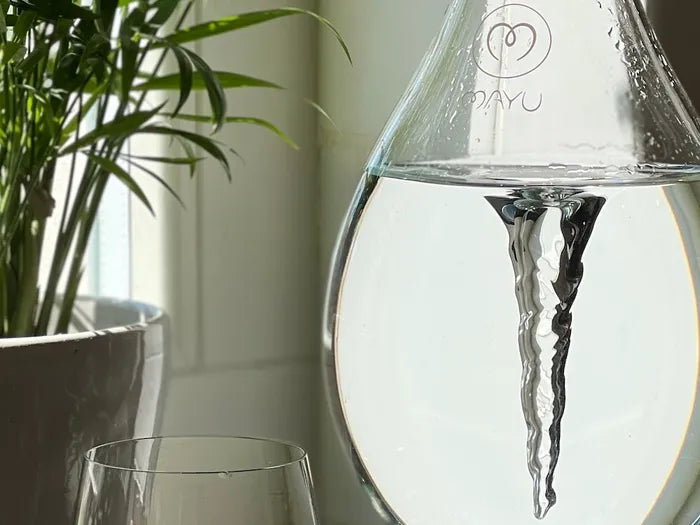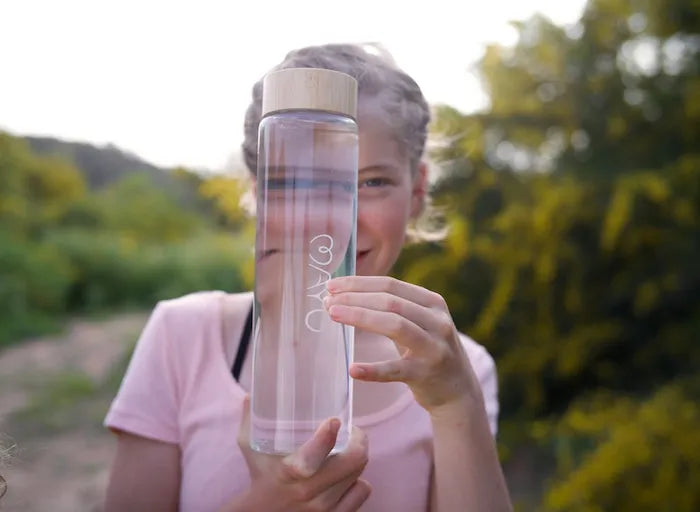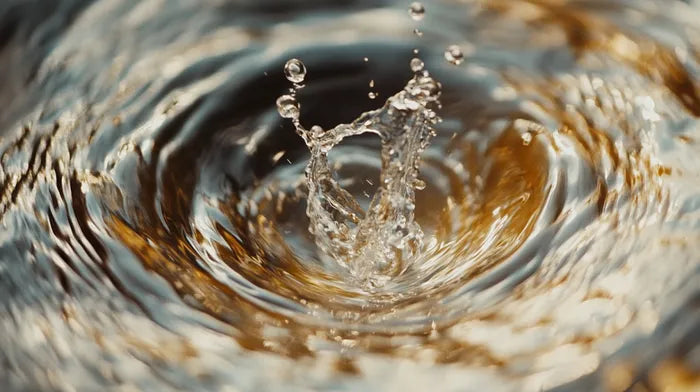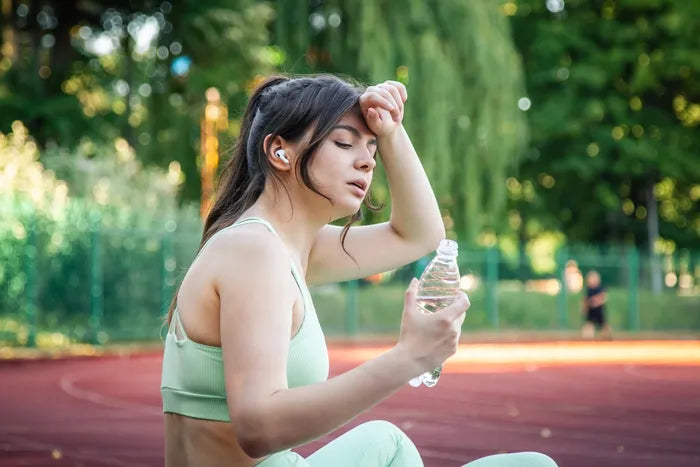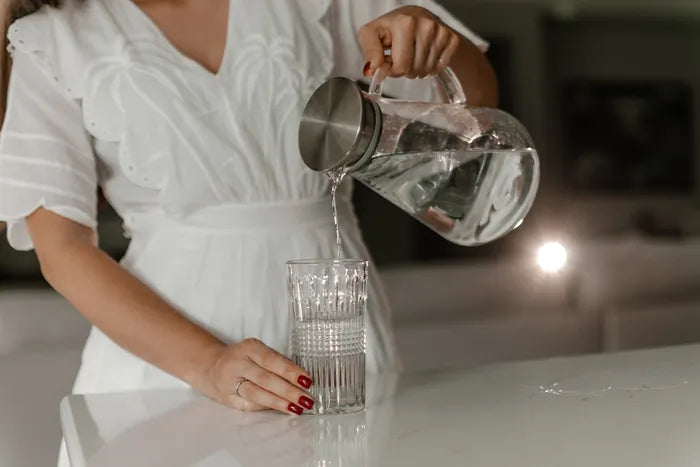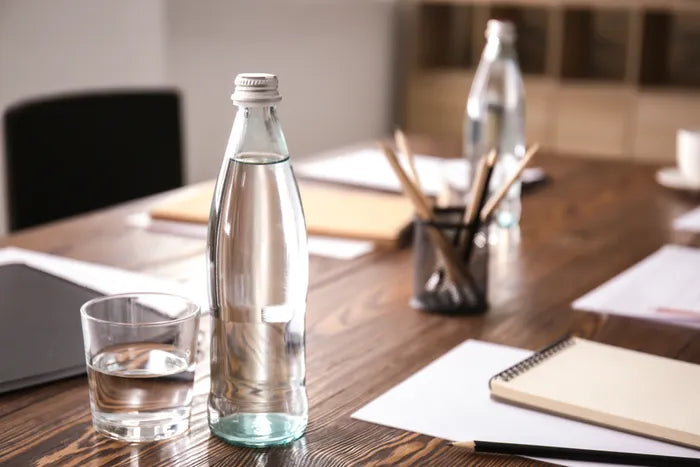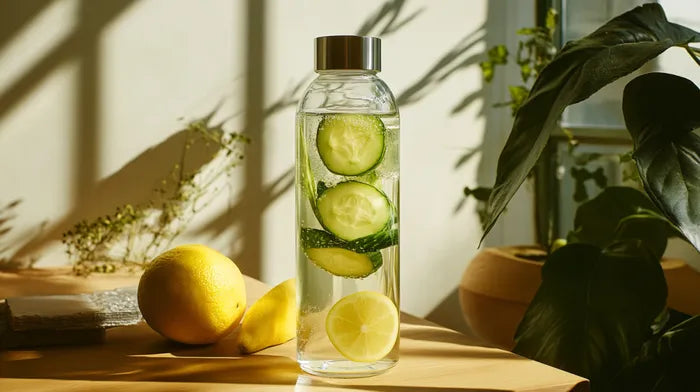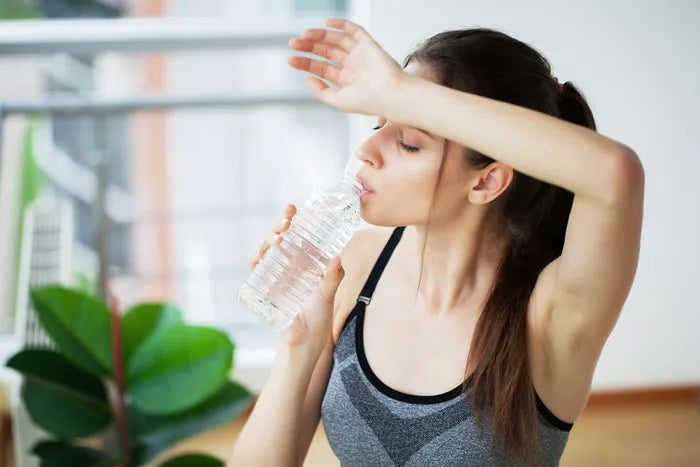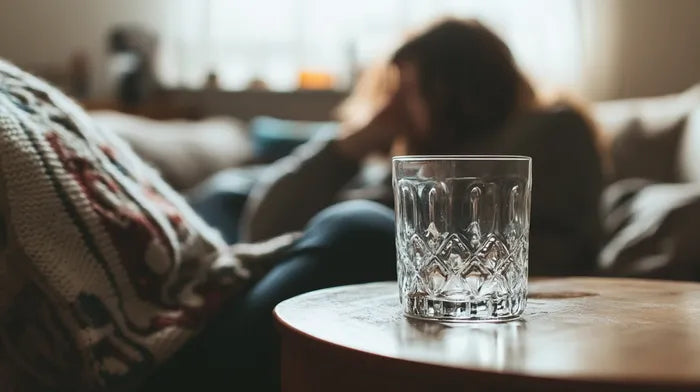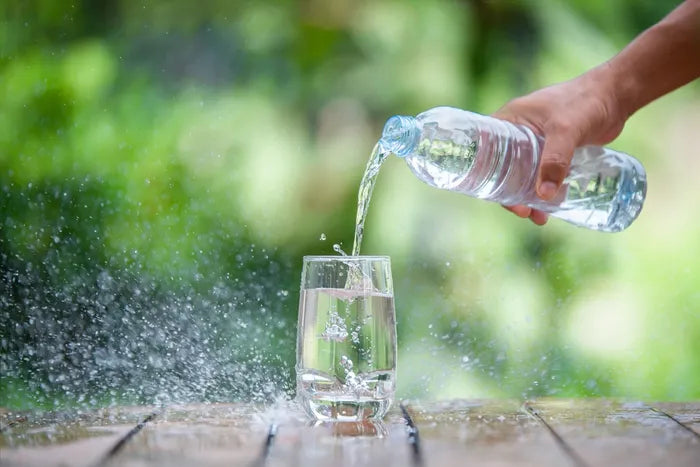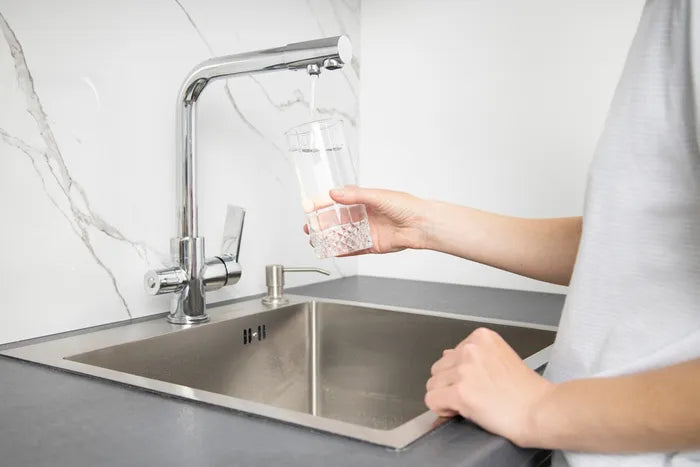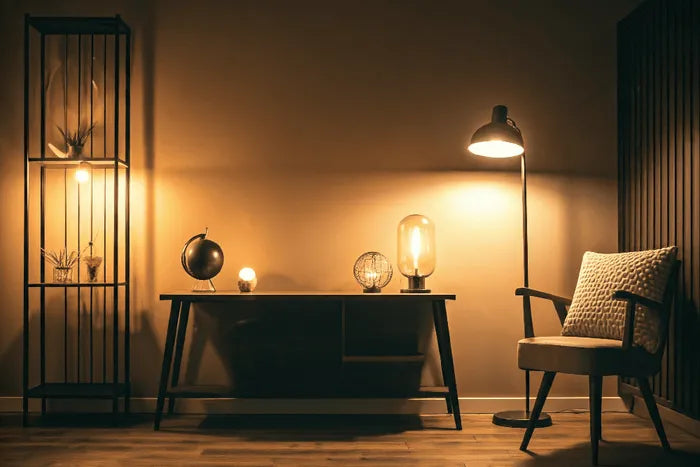Brita vs. Reverse Osmosis: Which Water Filter Is Right for You?
Cleaner, healthier water is just a filter away. Discover the perfect fit for your home with our Brita vs. Reverse Osmosis guide.
Updated May 15, 2025

Your tap water tastes a little… off. You know filtering is smart, but the sheer number of options can be overwhelming. You want safe water that tastes good, without spending a fortune or dealing with complicated setups.
And then there are the headlines: lead in pipes, microplastics in our water, forever chemicals like PFAS. It's no wonder you’re questioning if government standards are enough. Add concerns about plastic waste from bottled water, and the need for a good home filter becomes crystal clear.
Let’s cut through the noise. In this guide, we’ll compare two of the most popular options: Brita filters and reverse osmosis (RO) systems. You’ll get the facts on what each can (and can’t) do—so you can confidently choose what’s best for your home, health, and budget.
» Purify your tap water with a countertop RO filter
Brita vs. Reverse Osmosis Filter at a Glance
| Feature | Brita | Reverse Osmosis |
|---|---|---|
| Cost | Low | High |
| Maintenance | Very low, filters last 40–120 gallons | Moderate, System lasts 2-3 years, filters vary |
| Contaminant Removal | Basic (chlorine, some heavy metals, sediments) | Comprehensive (most contaminants, including PFAs and microplastics) |
| Mineral Retention | Retains some minerals | Removes all minerals |
| Health Benefits | Convenent, improves taste, removes some harmful contaminants | Removes a wider range of contaminants |
| Health Risks | Risks of bacterial growth if not maintained | Potential for mineral deficiency |
| Ideal Use Case | Small households with generally safe municipal water, budget conscious consumers | Large households, areas with poor water quality, those concerned with specific contaminants |
» Find out which filters are the best for hard water
Brita Water Filter Overview
Tap water often contains unwanted substances like chlorine, heavy metals, and large particles, which affect taste, odor, and overall quality. Many households want a simple, affordable way to improve their drinking water without installing complex systems.
Brita water filter pichers offer an easy fix with their pitcher or faucet attachments. Designed for small-scale filtration, these systems tackle around 30 common contaminants.
First, a screen traps large particles and prevents black flecks from reaching your glass. Then, activated carbon reduces mercury levels and eliminates the unpleasant taste and smell of chlorine.
Finally, ion exchange resin targets and removes metals such as copper, zinc, and cadmium, delivering cleaner, better-tasting water with minimal effort.
Pros
- Relatively inexpensive
- Requires minimal maintenance
- Eco-friendly
Cons
- Does not remove nitrates
- Filters need regular replacement
» Discover proven ways to remove chlorine from tap water
Reverse Osmosis Filter Overview
Reverse osmosis water filtration systems use a super-fine filter to catch just about everything you don’t want in your water—like bacteria, viruses, salts, and heavy metals.
Studies show RO filters can get rid of 95–99% of harmful substances like PFAS, fluoride, nitrates, heavy metals, and even microplastics [1,2]. This makes them one of the most comprehensive filtration methods for home use.
Though they cost more upfront, RO systems are perfect if you're worried about your water quality or want extra peace of mind for your family's health.
Pros
- Removes a wide range of contaminants
- Good for people with compromised immune systems
- Improves taste and odor
Cons
- Costs more than Brita
- Requires more maintenance
- Needs access to electricity
Brita vs. RO: Cost and Maintenance
Brita Filters
- Lifespan: 40-120 gallons
- Replacement Frequency: Every 2-6 months, depending on usage.
- Cost: Low initial cost but frequent replacements.
Reverse Osmosis Filters
- Lifespan: 6-12 months for the pre filters, 2-5 years for the RO membrane
- Replacement Frequency: Less frequent compared to Brita.
- Cost: Higher initial investment but more cost-effective over time due to longer lifespan.
Winner: Reverse Osmosis Filter
» Check out the ideal frequency for replacing your reverse osmosis filter
Brita vs. RO: Contaminant Removal and Mineral Retention
Brita Filters
Some contaminants in tap water may affect taste, safety, and overall quality—like chlorine, heavy metals, and organic compounds. Brita filters primarily use activated carbon and ion exchange resin to reduce them:
- Chlorine: Up to 97% reduction, improving taste and odor.
- Lead: Up to 99% reduction, crucial for homes with old plumbing.
- Copper: Up to 97% reduction.
- Mercury: Up to 96% reduction.
- Organic Compounds: Approximately 94% reduction.
While Brita excels at improving taste and reducing chlorine, lead, and certain metals, it has limitations. It’s less effective against certain pharmaceuticals and microbiological threats. They also don't reliably remove microplastics from water due to their larger pore size.
Brita filters can also reduce metals such as copper and zinc but are not effective at removing hard water minerals like calcium and magnesium. Their primary focus is on targeting specific contaminants, not altering the water’s mineral content.
Reverse Osmosis Filters
RO systems are very good at cleaning water because they use a special filter called a semi-permeable membrane. This membrane has tiny holes (about 0.0001 microns)—so small that only water molecules can pass through.
As water goes through the membrane under pressure, unwanted substances are left behind. In fact, studies report RO achieving very high removal of metals (often 95–99%); for example, one review found >99.4% removal for cadmium and copper by RO [3].
The small holes also block bacteria and many viruses, making the water safer to drink. RO systems usually have several filters working together:
RO is also effective at removing microplastic particles. A recent study found that point-of-use devices using fine membranes removed 94–100% of spiked microplastic fragments, whereas a carbon-only pitcher filter actually released more microplastics into its output [4].
Winner: Reverse Osmosis Filter
» Understand why water filtration is non-negotiable
Brita vs. RO: Health Benefits and Risks
Brita Filters
Brita filters effectively reduce contaminants like chlorine (up to 99%) and lead (up to 99%), improving water taste and safety. They also help reduce plastic waste, as each filter can replace up to 300 plastic bottles, making them a convenient and eco-friendly option.
But, Brita filters are not like RO filters. They can't remove fluoride, nitrates, or pharmaceuticals which can pose health risks. Additionally, if filters are not replaced regularly, they may harbor bacteria. While they enhance taste, they may also slightly reduce beneficial minerals like calcium and magnesium.
Reverse Osmosis Filters
Reverse osmosis systems provide comprehensive contaminant removal, eliminating up to 95-99% of impurities, including heavy metals and microorganisms. This makes them particularly safe for vulnerable populations with weakened immune systems.
On the downside, RO systems also remove beneficial minerals from water. One narrative review notes that RO can strip out 92–99% of calcium, magnesium and other beneficial minerals. It also found that drinking only “mineral-poor” may lead to poor bone or dental health in sensitive groups [5].
Mineral drops, like the MAYU Essential Minerals, can restore electrolytes that RO systems strip away. With just a few drops, you get better-tasting water that supports your body’s daily mineral needs—without relying on bottled mineral water.
Winner: Both the Brita and Reverse Osmosis filter
Brita vs. RO: Ideal Use Case
Brita Filter
Brita filters are best for improving the taste and odor of tap water, effectively removing chlorine and some heavy metals like lead and mercury. They are ideal for households with minor contaminant concerns, offering a convenient and affordable solution for better-tasting drinking water.
They require minimal maintenance and are easy to use, making them suitable for everyday consumption. But, they are not effective against fluoride, nitrates, or microbiological contaminants, so they may not be the best choice if these are present in the water supply.
Reverse Osmosis Filter
Reverse osmosis filters are ideal for comprehensive purification needs, effectively removing up to 95-99% of contaminants, including heavy metals, chlorine, fluoride, and microorganisms.
They are particularly beneficial for individuals with compromised immune systems or specific health concerns requiring high-quality water. While RO systems involve a higher initial investment and more maintenance, they provide long-term savings on bottled water and ensure safer drinking water.
Winner: Both the Brita and Reverse Osmosis Filter
» Find out if reverse osmosis really is the best water filter
Our Verdict: Brita vs. Reverse Osmosis Filter
Overall Winner: RO Reverse Osmosis Filter
While reverse osmosis filters emerge as a clear winner for their comprehensive contaminant removal and long-term cost-effectiveness, the ideal choice truly depends on your individual needs and priorities.
If your budget is tight and your water quality is generally good, get a Brita filter. But if you want to ensure your water is free from contaminants like PFAS, heavy metals, and nitrates, the Waterdrop A1 countertop system uses advanced reverse osmosis technology to tackle these effectively.
It solves the problem of unreliable tap water by providing consistent, high-quality filtration in a convenient, plug-and-play design—no plumbing.
References:
- “Reducing PFAS in Drinking Water with Treatment Technologies | US EPA,” US EPA, Feb. 26, 2025. Available: https://www.epa.gov/sciencematters/reducing-pfas-drinking-water-treatment-technologies
- “Reverse osmosis water filters: When are they a good choice?,” Environmental Working Group, Oct. 24, 2019. Available: https://www.ewg.org/news-insights/news/reverse-osmosis-water-filters-when-are-they-good-choice
- N. a. A. Qasem, R. H. Mohammed, and D. U. Lawal, “Removal of heavy metal ions from wastewater: a comprehensive and critical review,” Npj Clean Water, vol. 4, no. 1, Jul. 2021, doi: 10.1038/s41545-021-00127-0. Available: https://www.nature.com/articles/s41545-021-00127-0
- A. G. Cherian, Z. Liu, M. J. McKie, H. Almuhtaram, and R. C. Andrews, “Microplastic Removal from Drinking Water Using Point-of-Use Devices,” Polymers, vol. 15, no. 6, p. 1331, Mar. 2023, doi: 10.3390/polym15061331. Available: https://pubmed.ncbi.nlm.nih.gov/36987112/#:~:text=device%20with%20the%20smaller%20nominal,from%20drinking%20water
- K. V, R. Mani, V. Venkatesh, S. Kunhikannan, and S. Ganesh V., “The role of low mineral water consumption in reducing the mineral density of bones and teeth: a narrative review,” Cureus, Nov. 2023, doi: 10.7759/cureus.49119. Available: https://pubmed.ncbi.nlm.nih.gov/38125211/#:~:text=osmosis%20,of%20low%20mineral%20water%20along
Disclaimer: The information published by MAYU Water is not a substitute for the expert knowledge, advice, and recommendations of trained professionals. We strongly recommend consulting with industry experts and primary or scientific sources before making any health, research-related, or other important decisions.
FAQs
Should RO water be cloudy?
RO water should not be cloudy. Properly filtered RO water is typically clear and clean because the system removes particles, sediments, and dissolved solids that can cause cloudiness.
If your RO water appears cloudy, it’s often due to harmless air bubbles trapped in the water during the filtration process.
This can happen when a new RO system is installed, filters are replaced, or after maintenance. The cloudiness should clear up after the water sits for a few minutes.
Is reverse osmosis water good for kidneys?
Yes, RO water is generally safe and can be beneficial for kidney health, especially for people who need to limit their intake of harmful substances.
RO systems effectively remove contaminants like heavy metals, nitrates, and other chemicals that can burden the kidneys over time.
But, RO water is very low in minerals like calcium and magnesium. For healthy people, this isn’t usually a concern if they maintain a balanced diet.
But for people with chronic kidney disease, reducing excess minerals and toxins in drinking water can actually help ease the kidneys' workload.
Will reverse osmosis soften water?
Yes, reverse osmosis can soften water to some extent. RO systems remove dissolved minerals like calcium and magnesium, which are responsible for water hardness.
By filtering out these minerals, RO reduces water hardness and can improve taste and appearance.
But, RO systems are best used for drinking water, not for whole-house water softening. For large-scale softening (e.g., showers, appliances), a dedicated water softener is more effective and efficient.
Is it safe to drink RO water daily?
Yes, it's generally safe to drink reverse osmosis water daily. RO systems effectively remove harmful contaminants like heavy metals, nitrates, PFAS, and microplastics, providing cleaner and safer drinking water.
But, RO also removes beneficial minerals like calcium and magnesium. For healthy individuals with a balanced diet, this is not a health concern.
Some people prefer to use remineralization filters to restore taste and essential minerals.












